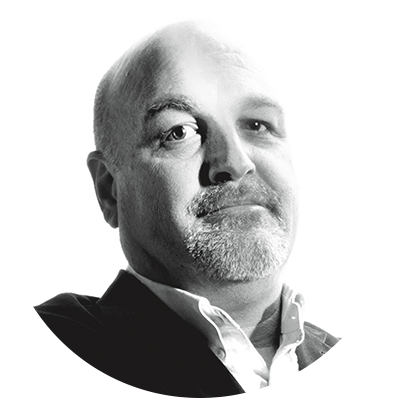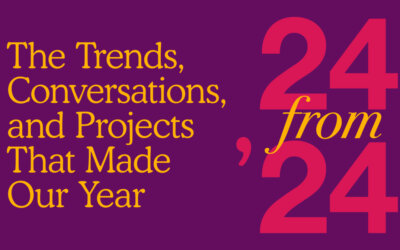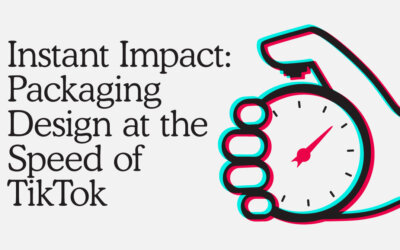CPG Trends
Pushing Brand Boundaries
Unconventional Substrates In Design

Bart Laube
Design Director
August 3, 2023
When it comes to packaging, is anything more boring than a plastic tube? Plastic is a ubiquitous petroleum product (one consumers definitely have feelings about); a tube is a simple shape. As brand designers, what can we do differently?
Turns out, everything. Design involves trying out all the options. Look at the marketplace…if you want to stand out, you have to be different. Being different is scary. What if consumers don’t like it? How much will it cost? The risks are real.
Yet, being different matters. In its golden era, Apple told us to “Think Different” and helped us not only question everything but identify ourselves with a new tribe of genius outsiders. That campaign wasn’t just a way to introduce new products, it was a new way of thinking about the brand and those who align with it.
Thinking in the same old ways created the cordless phone, which admittedly was a great small step forward in the phone category (certainly way better than the old wired-into-the-wall option). The cordless phone had memory for number storage and auto dial. You could take it anywhere in the house. But what if you could take it out of the house? What if we put a computer chip in it and created an ecosystem with different applications to help humans solve basic problems?
That’s a BIG difference, but we’ve heard that story 1,000 times. Our point: pushing boundaries is always necessary. One way for CPG brands and their designers to do it is through substrate exploration, and here are six breakthrough concepts we’re tracking now.
Clearly Different Branding
Packaging is not only a reflection of your brand; it’s a reflection of the people who buy your brand, especially in the world of beauty products.
Although many brands can claim the motto “Express yourself,” we’re taken with how MILK Makeup brings it to life through unique packaging. (In a sea of similar competition, “think different” also means “think better” than everyone else.) The brand knows its consumers want to see the quality of the products, feel reassured about what they’re putting on their skin, and look like their healthiest, best selves.
So, MILK devised packaging using clear substrates that allow consumers to actually see the product. Reflective inks on tubes and bottles reflect our images back to us. We’re the canvas; MILK is the medium. The brand’s simple identity and communication never try to oversell us. After all, showing your product’s quality is better than telling someone about it.
The takeaway: if your brand represents a fresh and clean feeling, use a substrate that feels fresh and clean. Clear packaging gives consumers confidence in what they’re buying, and in MILK’s case, it’s also an effective brand strategy.
Hi-Vis Problem Solving
Brands put an extraordinary amount of effort and money into making great products and providing the best service possible. But what’s the point if no one sees it?
According to the National Safety Council, “a 50-year-old driver may need twice as much light to see as well as a 30-year-old.” Yikes. That’s one of the reasons Arlon, a Southern California maker of cast films for the global wide-format graphics industry, developed a vehicle wrap substrate that is light-reflective. Think about the benefits: a fleet of first-response, taxi, or delivery vehicles that stand out in dim light or dark, ensuring both visibility for public safety—and attention-getting branding.
Personalization On A Whim
Everyone knows BMW is a pioneer in the automotive industry, so it’s not surprising to see the company debut a new technology. What was surprising at the 2022 Consumer Electronics Show was the kind of technology BMW rolled up with: color-changing ink for vehicles. According to The Verge, “the innovative paint scheme can be triggered at the touch of a button. Right now, the colors are limited to white, black, and grey. But despite the constrained palette, BMW says it could have implications for the efficiency of its electric vehicles.” Why? Because white surfaces reflect more sunlight than black ones, which may impact the heating and cooling needs of a vehicle.
Sticking It To Food Waste
You know how we feel about the power of color, which is one of many reasons we love this idea from Colombian supermarket Makro and its agency partner Grey. Realizing that “6.1 million tons of food are wasted annually in the country [and] 40% of the waste is from fruits and vegetables,” the organizations teamed up to design stickers that use color to show consumers how to use produce at every stage of ripeness. That means when your banana turns from green (fry it!) to spotty brown (make ice cream!), you won’t be tossing it. You’ll be turning it into something delicious and combatting food waste as you do.
It’s simple, informative, sticky substrate genius.
Eat Your Yogurt (And The Cup It Came In)
We’ve talked about edible packaging before, and we believe it can be a real and meaningful solution to the problem of plastic waste. Innovators from Israel to China are working on ways to make packaging consumable or compostable, using materials like soy proteins and sugarcane pulp. It goes even further than the material itself: scientists want to make sure that producing such material does as little to harm the environment as possible. That means considering big-picture factors like deforestation, fossil fuels, natural resources, climate, fair trade, and human labor.
Ridding the world (and our bodies) of plastics and microplastics is a huge, thorny, and controversial issue. We’ll be watching closely as the future of edible packaging evolves. In the meantime, ask yourself: if could eat the cup your yogurt comes in—instead of sending it off to a landfill—wouldn’t you?
Large Print For The Planet
For years now, we’ve been told to save trees (and costs) by keeping just about everything digital. But of course, there’s still a place for physical, large-format graphics for all kinds of branded experiences. The Graphical Tree, a London-based display graphics company, uses not only certified eco-inks, but also fully recyclable or re-usable materials as substrates for many of its projects (the company lists 17 different eco-friendly possibilities on its site). So, whether you’re creating evergreen materials for tradeshows or single-use elements for a temporary pop-up, you don’t have to generate landfill-clogging waste.
Innovating For Good Is More Than Just A Packaging Trend
Packaging substrates continue to evolve, but boundary-pushing creativity never goes out of style. There’s really only one rule: observe your buyers and make good choices. Plain ink is cheaper, yes, but will it get you noticed? Is plastic really your only—or best—option? Put the bar high, so high you can’t see it. Then make decisions based on the sky being the limit. Ultimately, consumers will reward you for it, and our planet will be better off, too.
More Insights
24 from ’24
Curious about the biggest trends and moments that shaped 2024? From viral consumer habits to industry innovations, our year-in-review dives into the stories that kept us inspired—and what they mean for the future.
Packaging Design at the Speed of TikTok
TikTok is transforming how brands approach packaging design, with trends moving faster than ever. Discover how CPG brands can keep up with this rapid pace, capitalize on viral moments, and stay ahead in an ever-evolving consumer landscape.
From Pixels to Prototypes: The Role of Physical Design in a Digital Age
AI tools are transforming product and packaging design, offering efficiency and accessibility. However, they can’t replace the value of physical prototyping. Discover how we combine AI’s creativity with hands-on experimentation, ensuring our designs resonate with human experiences.


